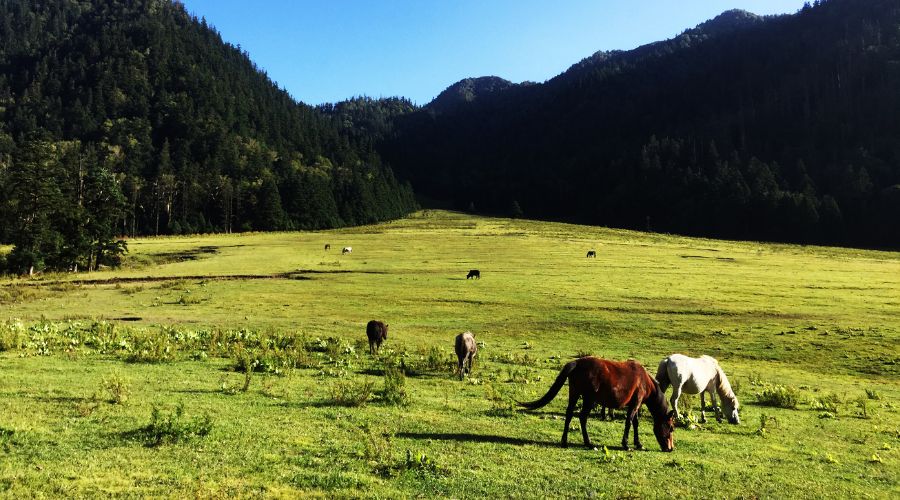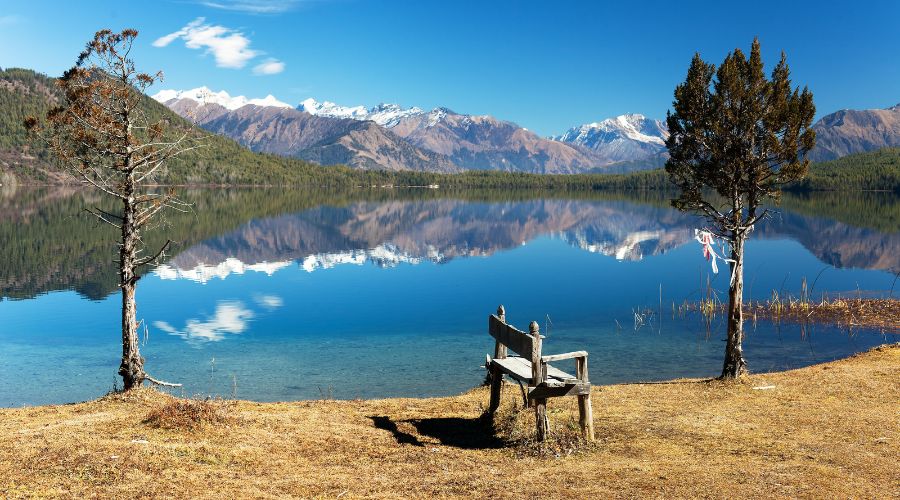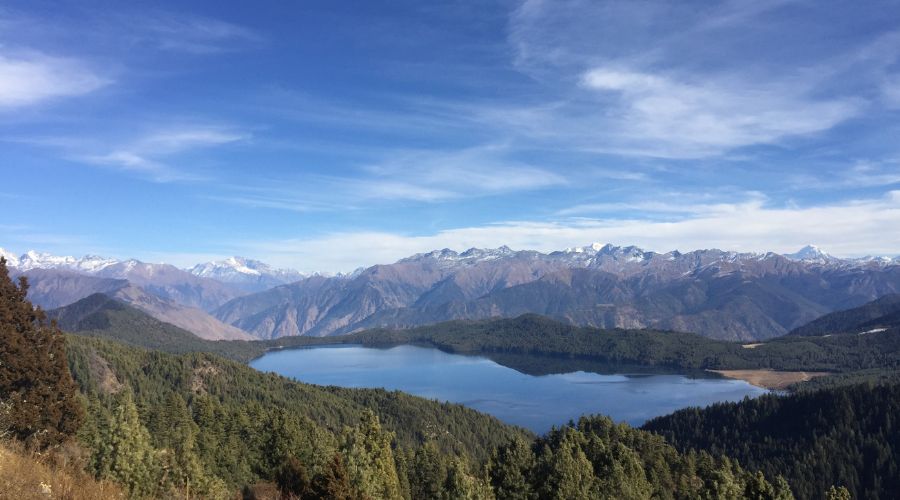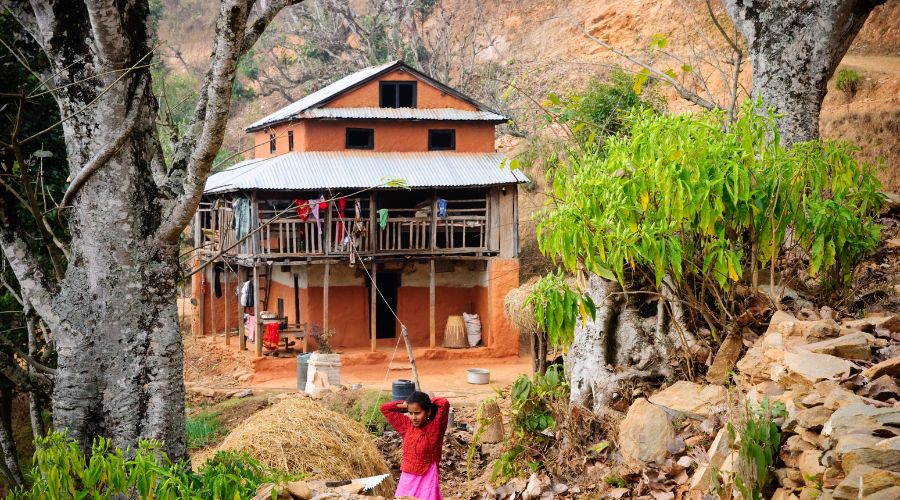
Mugu Nepal : Geography, Attractions and Lifestyle

Mugu Nepal : Geography, Attractions and Lifestyle
Ajay Kumar Shrestha
5699
08, 05 2023
Mugu remains a largely undiscovered paradise, as most tourists are yet to uncover its hidden gems. Even after my two visits to the district, separated by an eight-year gap, its inherent beauty and magnificent natural formations remain largely unaltered and untouched by the advances of tourism.
When I visited the Nepalese district of Mugu in 2015, I was struck by the untouched beauty of the region and its limited tourism. The teahouses lacked the hustle and bustle of more popular tourist destinations, and the locals continued their traditional way of life, unhindered and unbothered by hordes of visitors.
Fast forward to 2023, and the district remained largely unchanged, a testament to the region's rugged, unspoiled terrain and slow-paced culture. While there had been no dramatic influx of tourists nor significant infrastructure improvements, the region still offered a wealth of exploration and adventure for those willing to venture off the beaten track.

Photo: Rara lake of Mugu
Numerous tourist destinations in the district await exploration, with the promise of breathtaking vistas and a unique cultural experience. From the crystal-clear lakes of the Rara National Park to the snow-capped peaks of the Himalayas, Mugu is a virtual playground for outdoor enthusiasts.
The myriad of traditional villages, with centuries-old customs and traditions, are waiting to be discovered. For those seeking a peaceful retreat, the quietude and serenity of the district are unparalleled.
“There are many tourist destinations in the district. But, the federal, provincial, and local governments, have failed to make publicity about them properly. The number of tourists visiting the district is low,” said Lakpa Sherpa of Chhayanath Rara Municipality.
Geography
Located in the remote Karnali province of Nepal, Mugu boasts an expansive area of 3535 square km, making it one of the largest districts in the country. Despite its lack of development and luxury, Mugu's natural beauty and unexploited landscapes make it a visually stunning destination.
It is home to sub-alpine vegetation, including Silver fir, Birch, and Rhododendron, among others. Among its 17 peaks, Kande Hiunchuli stands tall as the highest with an elevation of 6627m (21742 ft), while Koiji Himal is another popular mountain located within the district.
Mugu is a diverse place, rich in ethnic groups and cultures, with the majority of the population practicing Hinduism, with Buddhism as a close second.
Despite its backward development, Mugu's lack of luxury has resulted in its people remaining close to their roots, fostering a humble and down-to-earth demeanor. Additionally, the district's isolation from pollution has helped preserve its natural beauty, making it one of the most visually pleasing places in the world.
What is Mugu famous for?
Mugu, a hidden region, is renowned for a plethora of distinguishing factors that distinguish it from other regions.
Its most prominent attraction is the Rara Lake, the largest freshwater lake in Nepal. Often referred to as the Mahendra Tal, it spans an extensive area of 10.8 square kilometers and is situated at an altitude of 2,990 meters (9,810 feet).
Secondly, Mugu is widely recognized for its abundance of medicinal herbs, including Yarchagumba, commonly known as caterpillar fungi, which is known to enhance the immune system and treat amoebic dysentery, as well as Guchi Chyau and Satuwa, among others.
Thirdly, the Murma viewpoint offers an incredibly surreal view of the Rara Lake, the surrounding vegetation, and the Tibetan plateau. The panoramic view from atop the viewpoint is bound to leave visitors spellbound.

Photo: Murma viewpoint, Mugu
Fourthly, adventure enthusiasts from across the globe flock to Mugu to engage in kayaking and rafting on the fast-flowing Karnali River, which is said to provide one of the best kayaking experiences available.
Fifthly, Mugu is home to the Rara National Park, which is the smallest national park in Nepal, covering an area of 106 square kilometers. The national park features vegetation such as blue pine, rhododendron, fir, pine, spruce, and black juniper. It also shelters rare animals such as red pandas, musk deer, yellow-throated marten, gray langur, and a wide range of unique birds like coots, Himalayan Monal, and Kalij others. This makes Rara National Park one of Mugu's most exceptional natural sites.
Lastly, Mugu exemplifies the concept of unity in diversity, as it exposes visitors to unique cultures, traditions, festivals, and cuisine that are distinct from those of other regions.
Lifestyle in Mugu
Nestled amidst the Himalayas lies the unassuming district of Mugu, known for its simplistic way of life. The locals of Mugu rely primarily on agriculture, animal husbandry, and the cultivation and trade of medicinal herbs to sustain their livelihoods. Mugalai or Mugum is the affectionate term used to refer to the residents of Mugu. Their houses, constructed with mud or stones, are small yet charming.

Photo: Traditional House of Rural Mugu District
The culinary practices of Mugu are a testament to their minimalistic way of life, with food being cooked over a fireplace, rather than fancy stoves. The flavors of dhido, gundruk, dal, and rice form the staple diet of the region, pleasing palates with their simple yet satisfying taste.
While modern-day luxuries such as advanced technology, modern transportation, education, and communication remain a distant dream for the people of Mugu, they are warm, humble, and amicable, creating a welcoming environment for all visitors.
My State of Being
The people of Mugu welcomed me with warmth and kindness, leaving me with an unforgettable impression of their culture. From singing folk songs to sharing stories, being part of the local culture was a truly enriching experience. I was served a traditional dal bhat in one of the teahouses, the simple yet exquisite taste still lingering on my palate.
Taking a walk down the terraced fields in the early morning or at sunset is an experience like no other, and the majestic view of the snow-capped peaks of the Himalayas and panoramic lake is simply majestic.
Stepping foot into Mugu was like entering a new world as I felt as though I had been transported to an untouched paradise. My time in this remote district has been an eye-opening experience, as I have been able to uncover its natural beauty, rich culture, and friendly people.
Yet, I am saddened to see that this hidden gem remains relatively unknown and unvisited by tourists. If more people knew how remarkable this district is, I am sure the locals would benefit greatly from the influx of visitors.
The area is ideal for those looking for an adventure off the beaten track, as it has remained largely undiscovered and untouched by modernity. Here, you can find pristine lakes, valleys, and mountains with a vibrant culture and rich heritage. You will also find locals who are incredibly friendly and welcoming, eager to show you the true beauty of their homeland.
Hence, I implore individuals to contemplate a sojourn to Mugu and aid the natives by bestowing upon the district the appreciation it merits. I am confident that you will be rewarded with a remarkable and enduring experience that will leave you ravenous to revisit it in the near future.
NEWSLETTER SIGNUP
Sign up to receive our trip ideas and travel offers!
Get updates and Exclusive Offers up to 20% Discount








